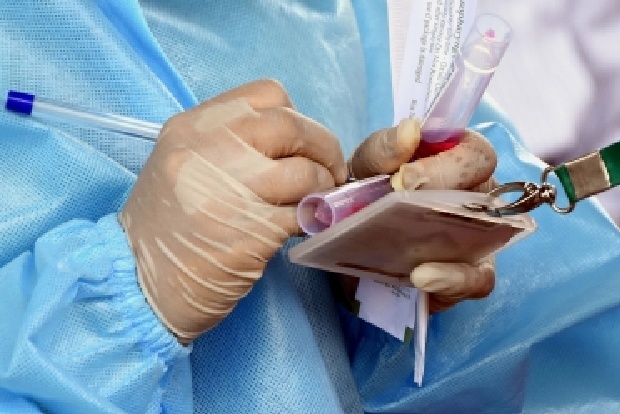Begin typing your search...
Blood test to track evolution of Covid infection developed
A team of researchers has developed a blood test that could be a simple and effective method for monitoring the infection caused by SARS-CoV-2, the virus leading to Covid-19.

London
The test, developed by researchers at the UMH-CSIC Neurosciences Institute in Alicante, Spain, quantifies the protein ACE2 -- the cellular protein which allows entry of the coronavirus into cells -- as well as ACE2 fragments -- produced as a result of interaction with the virus.
The study, published in FASEB Journal, found that patients with Covid-19, in the acute phase of infection, have significantly reduced plasma levels of the full-length ACE2 protein, which SARS-CoV-2 binds to enter cells, compared to non-infected controls.
In addition, the plasma levels of a lower molecular mass ACE2 fragment, generated as a result of interaction with the virus, are increased.
These abnormal levels of ACE2 and truncated ACE2 return to normal after the patients' recovery. This suggests that both forms of ACE2 present in plasma could be used as a good biomarker of the evolution of coronavirus infection.
"In this work, we have studied the plasma levels of the coronavirus receptor, the ACE2 protein, and we have been able to determine that there are different forms of the protein in plasma, and that part of the soluble ACE2 are proteolytic fragments of the ACE2 receptor, generated subsequently to interaction with the virus. The full-length protein is also found in plasma, which provides information about tissue affection during infection," explained lead researcher Javier Saez-Valero from the Institute.
The team included 59 patients with a positive reverse transcription polymerase chain reaction (RT-PCR) test for SARS-CoV-2 in nasopharyngeal swabs, of whom 24 were women and 35 men, with a mean age of 64 years.
Two additional groups were also analysed -- one of 17 participants, which included people aged 34 to 85 years with influenza A virus pneumonia. The other group consisted of 26 disease-free controls aged 34-85 years.
Changes in truncated and full-length ACE2 species were also examined in serum samples from humanised K18-hACE2 mice inoculated with a lethal dose of SARS-CoV-2. These humanised mice carry the human gene that produces the ACE2 protein, allowing SARS-CoV-2 infection, which does not occur naturally due to lack of recognition of murine ACE2 by the virus.
Visit news.dtnext.in to explore our interactive epaper!
Download the DT Next app for more exciting features!
Click here for iOS
Click here for Android
Next Story



